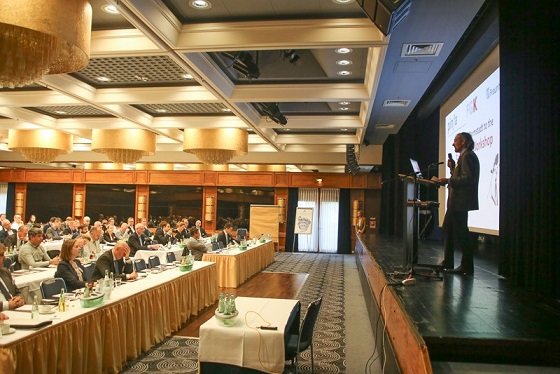Pinfa Workshop “Fire Safety Challenges in Automotive Plastics” in Darmstadt, Germany

Pinfa (the phosphorus, inorganic and nitrogen flame retardants association) invited to its third workshop on "Fire Safety Challenges in Automotive Plastics" at the Maritim Hotel Darmstadt on November 12, 2019. This workshop took place in co-operation with the "Forschungsgesellschaft Kunststoffe" (FGK) and the "Fraunhofer Institute for Structural Durability and System Reliability" (Fraunhofer LBF).
The first workshop in this series focused on the Chinese market, as China already accounted for 2/3 of all electric cars sold in 2017. The second workshop, on the other hand, dealt with the Japanese market, which is becoming more and more relevant. The aim of this third workshop was to increase the exchange in the value chain also within Europe. Due to this objective, it was a very popular event with more than one hundred participants from the electromobility value chain from areas such as research and development, OEMs, compounders, consultants and the manufacture of flame retardants from Europe.
The common theme of all three workshops was the future changes and major challenges of e-mobility. These include changing standards and requirements for materials, the appropriate selection of flame retardants and the associated compliance with fire protection regulations. The development of new, safer and more efficient batteries is of particular importance to increase range and practicability. At present, batteries for electric cars still weigh several hundred kilograms and this high weight reduces the range of electric cars. An important goal is therefore to use lighter materials such as plastics instead of metal (steel or aluminium).
Philippe Vangeel of Avere, the "European Association for Electromobitlity", raised another point that forces industry to act in the field of e-mobility: the strict EU targets on CO2 emissions, which mean that from 2050 onwards only electrified new vehicles can be sold. Norway is a European pioneer and has decided to ban the sale of vehicles with combustion engines as early as 2025. In addition to the current limited but growing charging infrastructure for e-vehicles in Europe, he also discussed the required rapid charging technology, which will be available in the future.

Markus Kemmler from "Kemmler Consulting" took up the topic of faster charging and the associated demands on charging cables. In order to achieve a fast charging process, the cables must be actively cooled, making them more manageable and much thinner and thus easier to use than would be otherwise required for the high charging currents. There are already several companies marketing such solutions. He also showed the current status of the charging cables and plugs used worldwide. At present there is no uniform global standard for charging cables and the materials used for them and thus there is a wealth of connectors and charging systems. However, such a standard must be sought to be able to switch to e-mobility throughout the country, but this also means that some of the existing charging stations will have to be replaced or converted. Until now, the user has had to carry appropriate adapter cables with him or hope for a suitable connection of the charging station.
Other important topics of the workshop were, as already mentioned, the further development of batteries, their technology and their construction, which is progressing at an unprecedented pace. Klaus Brandt from Akkubrand and Prof. Dr. Manfred Döring from Fraunhofer LBF reported on this, who placed an increased focus on the fire protection of batteries and their construction.
Antonio Nerone of DuPont and Florence Schutz of Solvay, among others, examined the fire protection of thermoplastic materials for charging systems in more detail. Engineering plastics are being developed and also partially available which meet the special requirements of electric vehicles, like coloring with “signal orange” and high current tracking indices (CTI of 600 V).
In addition, a panel discussion took place during the event to discuss the status and outlook of e-mobility and to exchange ideas with participants from different parts of the value chain.